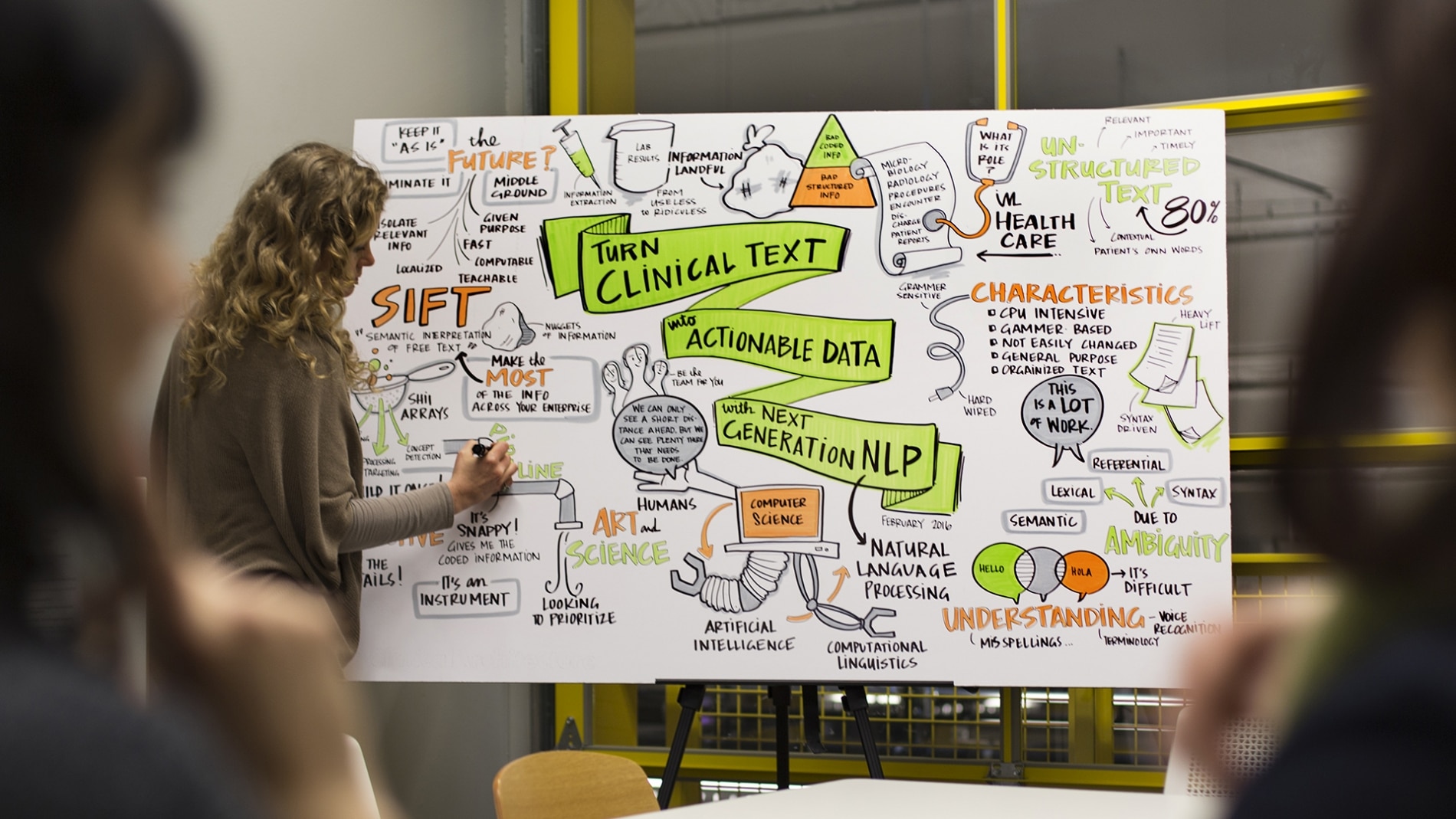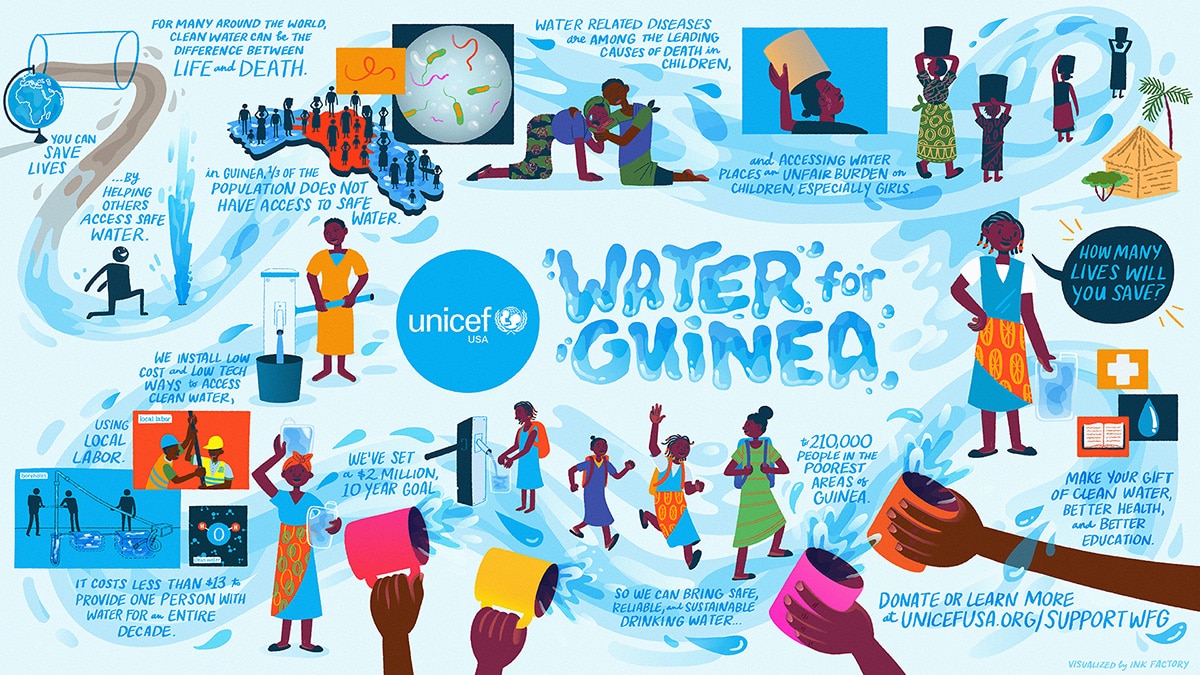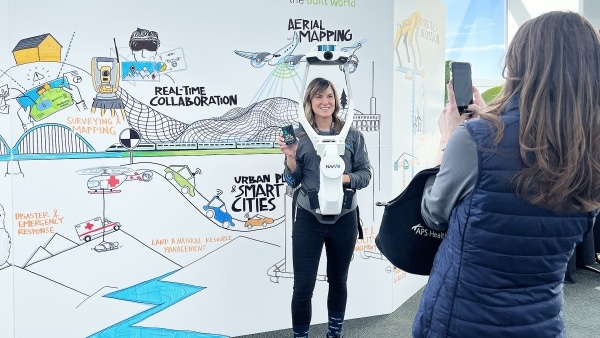
How To Visualize Ideas in 6 Creative Ways
In business, sharing ideas in a memorable, easy-to-digest way can be, well, challenging. Our brains are wired to prefer simplicity, and we’re prone to short attention spans (read: 8 seconds). So, how do we make technical or data-heavy information stick?
Visuals. (Yes, it’s really that simple.)
When you visualize ideas, it all makes sense a lot faster—and we remember it for longer.
We can thank a phenomenon called the picture superiority effect for this. Researchers have found people remember 80 percent of what they see, but only 20 percent of what they read. Meaning, pictures are superior to words when it comes to recalling and recognizing information.
But it’s a big leap from knowing that visuals are important to creating really awesome visuals. That’s where we can help. At Ink Factory, our artists are trained listeners, able to visualize complex ideas into clear, compelling images. The best part: This process works no matter the industry or topic. Our library of visual metaphors bridges any knowledge gaps and resonates across industries.
You don’t need to take our word for it (science says you likely won’t remember it anyway). Rather, for maximum recall, let us show you. Read on for six examples of content commonly created and shared in business—and perfect for visualizing.

1. Operational processes and sales collateral
If you sell a technical or complex product or service, easy-on-the-eye visuals that simply convey what it is, how it works, and why someone needs it will go a long way with customers, prospects and sales team members. Ink Factory artists are trained to sift through technical lingo and translate the most important ideas into key text and visuals.
For software maker Autodesk, illustrating its design and manufacturing process helped its sales team better understand the company’s complex product ecosystem. “Ink Factory challenged us to think about how we communicate our message, which we value greatly,” said Stephen Hooper, Vice President and General Manager of Fusion 360 at Autodesk.
Color is a key consideration when illustrating business processes, how-to guides, and similar materials. Smart use of color when visualizing complex ideas has been shown to increase recall by up to 82 percent. But not all colors are created equal; for example, blues and greens often elicit positive responses, while reds can have the opposite effect.
2. Your company or brand story
Every business has a founding story that is unique. Let yours shine with the help of an animated video. This is what Chicago-based bank Wintrust did to introduce new hires to its history, as well as connect with customers online. Narration by the bank’s founder, which included early-day anecdotes, brought a warm, human touch to the brand.
With animation, you can more quickly and efficiently create a visual representation of your company’s history, no matter if it spans 10 years or 100. Our process helps businesses identify their most important messages, which we then animate on screen.
3. A business’s vision, mission, and values
Your company’s vision and values are its foundation, crafted with great care and consideration. These words matter, and when translated to visuals they are even more impactful. In fact, visualizing these guiding principles can help you forge emotional connections with stakeholders like employees and customers.
For management consulting firm West Monroe Partners, visualizing its purpose just made sense. The firm is dedicated to building the next generation of leaders. It’s a story about people, for people—a perfect fit for animated video.
The final result was a video that really resonates with employees. “The video makes a big difference in how we communicate our purpose to our folks and does so in a meaningful way,” shared Michele Catalano, director of talent and leadership development at West Monroe Partners.
4. Onboarding and training materials
Today’s remote-first workforce has created new challenges for sharing important ideas with employees and other internal audiences. Visualizing content can help these groups better process, remember and engage with it, even in virtual settings.
For example, West Monroe Partners knew its unique approach to an employee stock ownership plan (ESOP) set it apart as an employer. But an ESOP is complex and often requires education to fully understand its benefits, something an animated video helped the firm accomplish. Using their “Purpose” video as inspiration, we created a script and visual imagery that reflected the firm’s personality and culture.
Associations and membership organizations can take a similar approach when welcoming new members—and keeping existing ones engaged. Consider videos or illustrations that showcase the benefits of membership or how to make the most of your membership.

5. A fundraising call to action
Moving people to action begins by forging an emotional connection, something images can accomplish more quickly than words alone. For non-profit organizations raising funds for important causes, speed to action is critical.
That’s why UNICEF’s Water for Guinea project leaned into visuals to show the big impact one small donation can make in bringing clean water to children. The project’s sponsor narrated the video, lending credibility along with a serious yet hopeful tone. Ink Factory then created still illustrations so UNICEF could share the most compelling points across other channels, spurring more action.
![]()
6. Social media ad creative
Technical fields are often rife with lingo that can easily confuse clients and prospects. Visuals help cut down on this jargon and present a simpler narrative to key audiences. One application where this is especially helpful is digital and social media ads. In these contexts where you have limited time and space to tell your story, let visuals do the heavy lifting.
PTC Servigistics, a computer software services company, saw success when it introduced illustrations and animated videos to explain its various service offerings to prospects at trade shows and sales meetings. “It is a fantastic visual framework to simplify complex technologies and business strategies,” said Bradley Rhoton, Marketing Manager with PTC Servigistics.
The company utilized this creative in its paid social efforts, generating even more success. “Sharing the animation vignettes through a LinkedIn campaign improved our click-through rates and impressions by over 200%,” added Rhoton.

This list could easily go on (and on) because the use cases for visualizing complex ideas are truly endless. If you’re working with technical, complex, or data-rich ideas, the Ink Factory team can help you identify a visual strategy that brings it to life. Schedule a call today and let’s create something awesome together.


